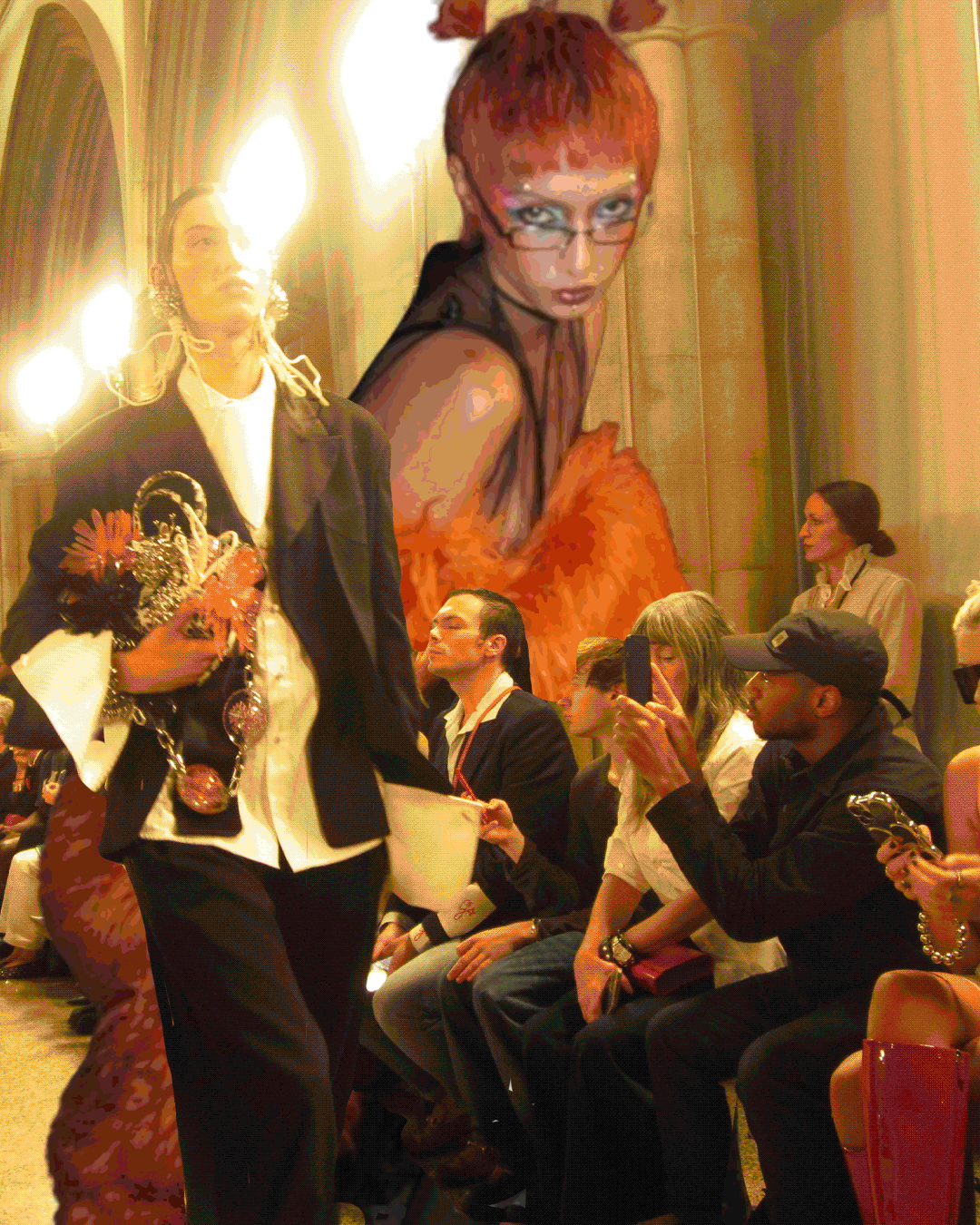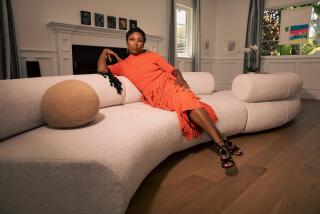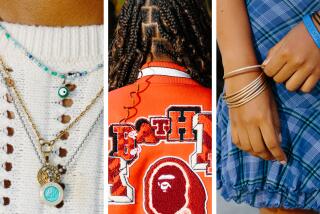Divided They Stand
- Share via
A meeting with the three women who design for Roxy, Quiksilver’s up-and-coming juniors line, can feel a little like a slumber party.
When Lissa Zwahlen, Sonia Kasparian and Julie Aversa gather inside Zwahlen’s toy-strewn office at Quiksilver’s Costa Mesa headquarters, the mood is casual and fun.
Zwahlen, sporting khakis, a white polo-style shirt and a ponytail, kicks back in an easy chair surrounded by her vintage Barbie and hula dolls. Kasparian, her brown hair streaked with blond and wearing jeans and a baby tee, perches on a chair. Aversa, looking tan in a bright plaid shirt and orange capris, sits cross-legged on the floor.
Asked their age, the three respond like teenagers told it’s time for bed.
“Argh!”
“Nooooh!”
“Do we have to?”
Though nobody’s even out of her 30s, the designers don’t want people knowing that they’re a little past the slumber-party age. The reason: Roxy’s target customer has turned out to be all of 13.
“We’re about that young girl,” Aversa says. “She’s so unique and fresh.”
Their buyer is the carefree, “Clueless”-type of girl unspoiled by grunge.
“She’s not jaded like Gen X,” Zwahlen says. “She’s excited about clothes.”
Thanks to the designers’ youthful approach to style, Roxy has been making waves in the fashion industry. Kasparian has created board shorts for girls that have had imitators scrambling to copy the hot look.
In March, the designers were invited to show their line at the Girls Rule fashion show in New York City, where they attracted the attention of Bloomingdale’s and other East Coast buyers.
Roxy’s most recent coup: a two-page spread in the May issue of Vogue featuring a ‘50s-inspired, two-piece swimsuit in blue with white trim designed by Aversa. The spread proved that the designers are starting to attract notice outside the surf industry.
“We’ve been recognized within our own market, but now we’re getting recognized on a broader scale,” Kasparian says. “It’s a ripple effect.”
Having three designers could cause a clash of egos, but Roxy’s “design by committee” system appears to be working.
Zwahlen, design director in charge of Roxy’s sportswear, creates denim basics and other street fashions. She just finished the holiday collection, which features a hip-hugger pant made out of a cream-colored moire taffeta, knit tops with little metallic stripes and T-shirts with silver nailhead logos.
“It’s a slight disco vibe,” Zwahlen says.
Kasparian designs Roxy’s active wear, including board shorts, volley shorts, T-shirts, jackets and other sports- and beach-oriented attire. She’s also in charge of Roxy’s new bodywear line. Her latest creation: a board short made out of embossed vinyl.
“It looks like a shower curtain. It’s really cool,” she says.
Kasparian also designed a funky board short inspired by a football jersey, made out of a shiny knit with a drawstring front.
Aversa is already working on the spring ’97 collection, which will see more bikinis with boy-leg pants and swimwear with tone-on-tone surface texture and special trims instead of loud prints.
“The colors are extremely bright--borderline neon,” Aversa says. “Swimwear is reverting back to brights and a lot of shiny textures.”
Though they have divided duties, the designers rely on one another to tell them whether a design works.
By the time they’re ready to unveil their latest collections, the designers feel comfortable knowing their creations have the support of team Roxy.
“It builds confidence in what you’re doing,” Aversa says.
The designers are confident enough to avoid subscribing to fashion forecast services, which many in the industry use to stay on top of trends.
“We want to be the ones that set the trends,” Zwahlen says. “Our influence is right here, in our lives.”
Design ideas spring from all kinds of sources--from the past (including favorite old TV shows such as “The Brady Bunch” and “The Mod Squad”) and from seeing what girls like wearing today.
“There’s clothing we enjoyed in our youth, and now our customer is enjoying it,” Kasparian says.
That customer is a lot younger than they first imagined.
“We were going for 15- to 30-year-olds, but 12- and 13-year-old girls are buying our product,” Zwahlen says. “They’re the children of the baby boomers.”
This new generation has never worn hip-huggers or tight tees. They’re tired of dark and baggy clothes. To them, bright colors such as orange, lime and baby blue look new.
“They like things tighter, shorter, higher,” Kasparian says.
The three came to Roxy through very different routes.
Though Kasparian, 32, was not raised in New Age communes, as an overzealous media release recently suggested, she did have an unusual upbringing. She moved out of her house in the rural town of Barrington, Ill., and headed to Los Angeles at age 14.
“I used to take art classes at the Art Institute of Chicago and loved the big city life,” she says.
She rented a room at a home in Encino and graduated with a degree in fashion at Otis College of Art and Design in Los Angeles, where she was named designer of the year.
“I’ve been designing ever since,” says Kasparian, now a Tujunga resident. She worked for Jimmy Z before being lured away by Quiksilver six years ago.
Zwahlen, 36, a Santa Monica resident, grew up in Colorado. She got a degree in textiles and clothing from Colorado State and attended the Fashion Institute of Technology in New York City. After moving to L.A., she designed for Camp Beverly Hills, Jantzen and Gotcha before joining Quiksilver five years ago.
“I liked Orange County. There’s sunshine and a fresh attitude,” she says.
Aversa, 25, of Newport Beach grew up in Huntington Beach. She modeled for local surf and beachwear companies, which fueled her interest in fashion. She went to the American College for the Applied Arts in Westwood to study fashion design.
“This is my first job,” Aversa says. “I was modeling and knew a lot of people” in the business. She joined Roxy two years ago, after an interview with Zwahlen and Kasparian.
“We dug her,” Zwahlen says.
The designers’ dream for Roxy: to keep growing, but not so fast that they lose touch with their Roxy girl. Since its inception more than three years ago, Roxy has more than 500 accounts nationwide. The designers have broken out of the surf niche; Roxy can now be found in clothing boutiques such as Urban Outfitters and American Rag. The collection retails for $20 to $50 for sportswear, $48 to $75 for swimwear.
“We’ve gotten into some really groovy boutiques. It’s not just surf anymore,” Zwahlen says.
With buyers now knocking on their door, the designers want to maintain a tight control on distribution.
“We want to keep it exclusive, keep it hip,” Aversa says. “If everyone wears it, the young girls won’t like it.”






